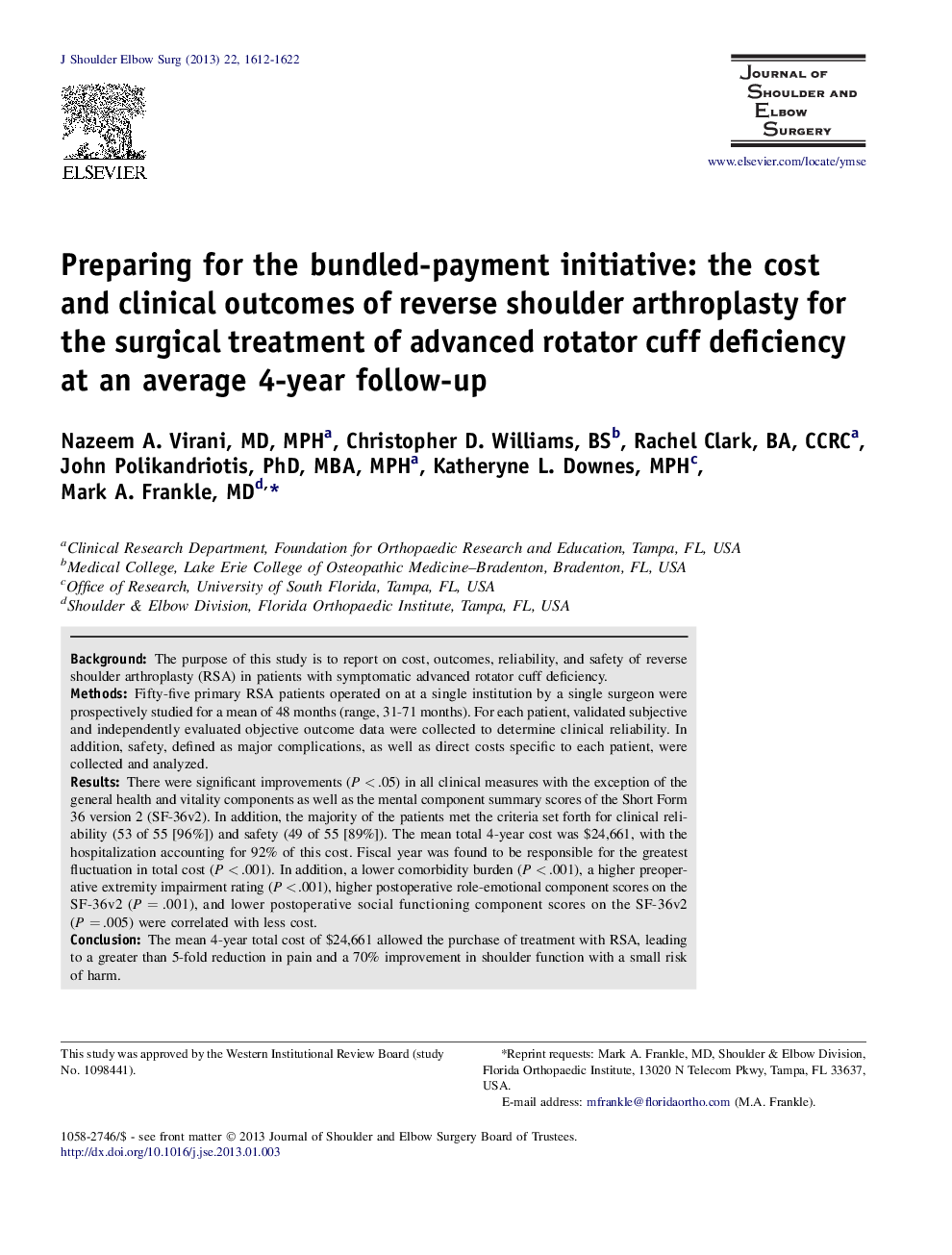| Article ID | Journal | Published Year | Pages | File Type |
|---|---|---|---|---|
| 4073284 | Journal of Shoulder and Elbow Surgery | 2013 | 11 Pages |
BackgroundThe purpose of this study is to report on cost, outcomes, reliability, and safety of reverse shoulder arthroplasty (RSA) in patients with symptomatic advanced rotator cuff deficiency.MethodsFifty-five primary RSA patients operated on at a single institution by a single surgeon were prospectively studied for a mean of 48 months (range, 31-71 months). For each patient, validated subjective and independently evaluated objective outcome data were collected to determine clinical reliability. In addition, safety, defined as major complications, as well as direct costs specific to each patient, were collected and analyzed.ResultsThere were significant improvements (P < .05) in all clinical measures with the exception of the general health and vitality components as well as the mental component summary scores of the Short Form 36 version 2 (SF-36v2). In addition, the majority of the patients met the criteria set forth for clinical reliability (53 of 55 [96%]) and safety (49 of 55 [89%]). The mean total 4-year cost was $24,661, with the hospitalization accounting for 92% of this cost. Fiscal year was found to be responsible for the greatest fluctuation in total cost (P < .001). In addition, a lower comorbidity burden (P < .001), a higher preoperative extremity impairment rating (P < .001), higher postoperative role-emotional component scores on the SF-36v2 (P = .001), and lower postoperative social functioning component scores on the SF-36v2 (P = .005) were correlated with less cost.ConclusionThe mean 4-year total cost of $24,661 allowed the purchase of treatment with RSA, leading to a greater than 5-fold reduction in pain and a 70% improvement in shoulder function with a small risk of harm.
